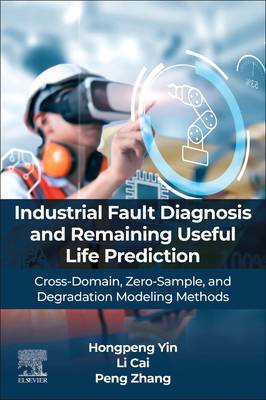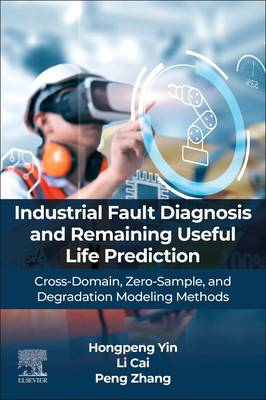
Je cadeautjes zeker op tijd in huis hebben voor de feestdagen? Kom langs in onze winkels en vind het perfecte geschenk!
- Afhalen na 1 uur in een winkel met voorraad
- Gratis thuislevering in België vanaf € 30
- Ruim aanbod met 7 miljoen producten
Je cadeautjes zeker op tijd in huis hebben voor de feestdagen? Kom langs in onze winkels en vind het perfecte geschenk!
- Afhalen na 1 uur in een winkel met voorraad
- Gratis thuislevering in België vanaf € 30
- Ruim aanbod met 7 miljoen producten
Zoeken
Industrial Fault Diagnosis and Remaining Useful Life Prediction
Cross-Domain, Zero-Sample, and Degradation Modeling Methods
Hongpeng Yin, Li Cai, Peng Zhang
Paperback | Engels
€ 209,45
+ 418 punten
Omschrijving
Industrial Fault Diagnosis and Remaining Useful Life Prediction: Cross-Domain, Zero-Sample, and Degradation Modeling Methods introduces zero-sample learning methods that enable fault diagnosis and Predict Remaining Useful Life (RUL) without the need for labelled fault data. This is particularly valuable in industrial settings where labelled data is scarce or unavailable. Offers step-by-step guidance on implementing zero-shot learning models using real industrial data, reducing the learning curve for practitioners; includes real-world industrial case studies to demonstrate the application of zero-sample learning techniques in various industries, such as manufacturing, energy, and transportation. Such case studies provide readers with actionable insights and practical solutions. The book covers advanced methodologies for predicting the remaining useful life of industrial equipment, supporting readers in optimizing maintenance schedules, reducing downtime and extending the lifespan of critical assets. Covers state-of-the-art algorithms, including deep learning, transfer learning and domain adaptation, tailored for zero-sample scenarios. These tools empower readers to develop robust fault diagnosis and RUL prediction systems, enhancing predictive maintenance capabilities and ensuring the reliability of industrial systems.
Specificaties
Betrokkenen
- Auteur(s):
- Uitgeverij:
Inhoud
- Aantal bladzijden:
- 200
- Taal:
- Engels
Eigenschappen
- Productcode (EAN):
- 9780443442919
- Verschijningsdatum:
- 1/02/2026
- Uitvoering:
- Paperback
- Formaat:
- Trade paperback (VS)
- Afmetingen:
- 152 mm x 229 mm
- Gewicht:
- 449 g

Alleen bij Standaard Boekhandel
+ 418 punten op je klantenkaart van Standaard Boekhandel
Beoordelingen
We publiceren alleen reviews die voldoen aan de voorwaarden voor reviews. Bekijk onze voorwaarden voor reviews.









